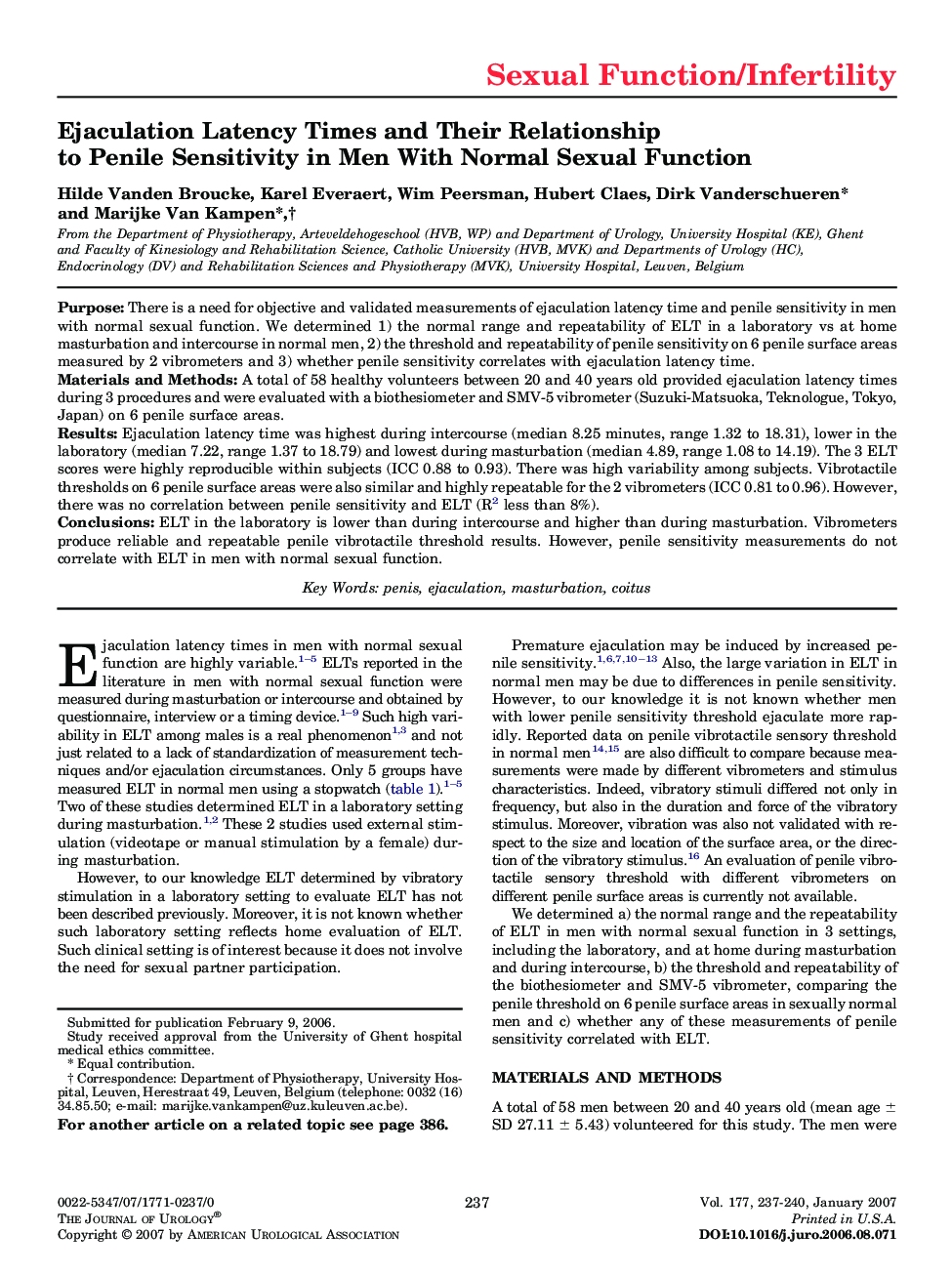| Article ID | Journal | Published Year | Pages | File Type |
|---|---|---|---|---|
| 3879679 | The Journal of Urology | 2007 | 4 Pages |
PurposeThere is a need for objective and validated measurements of ejaculation latency time and penile sensitivity in men with normal sexual function. We determined 1) the normal range and repeatability of ELT in a laboratory vs at home masturbation and intercourse in normal men, 2) the threshold and repeatability of penile sensitivity on 6 penile surface areas measured by 2 vibrometers and 3) whether penile sensitivity correlates with ejaculation latency time.Materials and MethodsA total of 58 healthy volunteers between 20 and 40 years old provided ejaculation latency times during 3 procedures and were evaluated with a biothesiometer and SMV-5 vibrometer (Suzuki-Matsuoka, Teknologue, Tokyo, Japan) on 6 penile surface areas.ResultsEjaculation latency time was highest during intercourse (median 8.25 minutes, range 1.32 to 18.31), lower in the laboratory (median 7.22, range 1.37 to 18.79) and lowest during masturbation (median 4.89, range 1.08 to 14.19). The 3 ELT scores were highly reproducible within subjects (ICC 0.88 to 0.93). There was high variability among subjects. Vibrotactile thresholds on 6 penile surface areas were also similar and highly repeatable for the 2 vibrometers (ICC 0.81 to 0.96). However, there was no correlation between penile sensitivity and ELT (R2 less than 8%).ConclusionsELT in the laboratory is lower than during intercourse and higher than during masturbation. Vibrometers produce reliable and repeatable penile vibrotactile threshold results. However, penile sensitivity measurements do not correlate with ELT in men with normal sexual function.
